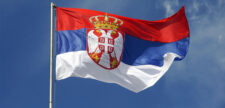Tranquil Reads – Three From Japan
In my continuing writing recovery from my pandemic-induced writing death, I am following my own advice: Read, read, read! Luckily, I stumbled across a book the other day that took me on the exact right path. What I need more than anything right now are tranquil reads. And I found three. How delightful that they all come from Japan! Thus my adventures there continue …. from my armchair.
Title image: A courtyard view of Genkoan Temple, Kyoto, which I visited in 2019. A superbly tranquil place
Tranquil Reads #1: Shinrin-Yoku
The author, Yoshifumi Miyazaki, translates shinrin-yoku as “forest bathing.” He likens it to “sun bathing,” where you don’t actually go in the water. Rather, you soak up your surrounding conditions.

Miyazaki points out that it is only two or three hundred years since the Industrial Revolution. Before then only 3% of the world’s population lived in urban areas. As a result of industrialization now 54% of us do. By 2050 it is predicted that 66% of the population will live in urban areas.
In other words, humans spent 99.99% of their existence in natural environments. And now most of us don’t. Which means we are subject to stress.
I didn’t need Miyazaki to inform me of the stresses of urban life. However, I did experience the simple act of reading about forest bathing to be relaxing.
The book also made me realize a second reason why I’m weathering the pandemic as well as I am. (My well-being is only relative.) Namely, that I experience sunrise every morning and sunset every night.
(The first reason for my relative equanimity is my daily practice of yoga.)
Every human on earth can witness sunrise and sunset every day. However, in my case, I don’t have to make an effort. I live on the 21st floor of a high-rise with floor-to-ceiling glass windows. Sunrises and sunsets are part of my daily life.

Sunset, Durham, NC, December 9

Sunrise, Durham, NC, December 10
My point is not that you need to look outside your window or go outside every morning and night to watch the sun come up or down. It’s rather that Miyazaki’s book reminded me of the importance of feeling connected to nature. And how necessary it is – especially these days – to feel connected.
Connecting to Mother Earth is a good place to start.
For more, see The Benefits of ‘Forest Bathing’
Tranquil Reads #2: Cha no Hon
Okakura Kakuzo wrote The Book of Tea (Cha no Hon) in 1906. I first read it easily 10 years ago. While reading about forest bathing, I was suddenly reminded of The Book of Tea and longed to reread it. So, I did.
I’m glad I did, because I drank it in like a soothing cup of tea. The book is a one-sitting-read mediation on Teaism, a religion of aestheticism. It is a cult, Kakuzo writes, founded on “the adoration of the beautiful among the sordid facts of everyday existence. It inculcates purity and harmony, the mystery of mutual charity, the romanticism of the social order.”
I loved reading about Japanese aesthetics, which are so different from those in the West. Or, I should say, they were so different from Victorian aesthetics at the turn of the 20th century. Now, over a century later, many Europeans and Americans have embraced the minimalism of Modernism and the sleekness Scandinavian design. Some are even practicing my own religion, namely Decluttering.
Teaism is many things.
First, it is hygiene. Because it enforces cleanliness.
Next, it is economics. For it shows comfort in simplicity rather than in the complex and costly.
Finally, it is moral geometry. In that it defines our sense of proportion to the universe.
And it is certainly delightful to read about.
It is also relaxing to watch. Check out this video:
For an otherworldly dip into the world of tea masters, tea houses, samurais and all things exquisitely Japanese, I can recommend The Book of Tea.
Tranquil Reads #3: Ikigai
One Japanese word, a whole concept: your reason for living. More forcefully: what makes you happy to jump out of bed in the morning,
There are any number of books on the subject. The one I chose is Ikigai by Marie Xue. When I downloaded it, I didn’t realize it was only 22 pages. I tend to like longer reads. But perhaps it didn’t need to be any longer, because the whole thing can be summed up in a chart:

You find your ikigai by addressing the four Whats in the yellow, green, blue and pink circles.
My responses: I love language and the language of love. So getting paid to be a linguist/romance writer is just about right. And the world does need love and an understanding of language, now more than ever.
I’m feeling very relaxed right now.
Categorised in: Adventure, Blog, Japan, What I'm Reading
This post was written by Julie Tetel Andresen
You may also like these stories:
- google+
- comment



